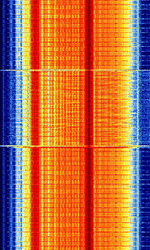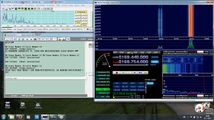European Radio Message System (ERMES)
| Paging Modes | |
|---|---|
| AFSK Paging Link - POCSAG - Glenayre Paging Link - FLEX - ReFLEX - Golay Paging (GSC) - European Radio Message System (ERMES) - Multitone Paging |
 | |
|---|---|
| Frequencies | 169.4125 MHz,169.8325 MHz |
| Frequency Range | 169.4125 MHz - 169.8325 MHz |
| Mode | NFM |
| Modulation | 4FSK |
| ACF | 740 ms |
| Emission Designator | — |
| Bandwidth | 25 kHz |
| Location | Europe |
| Short Description | European Radio Message System (ERMES) is a European common standard for paging developed by the European Telecommunications Standards Institute (ESTI) |
| I/Q Raw Recording | Download file |
| Audio Sample | |
European Radio Message System (ERMES) is a European common standard for paging developed by ETSI (European Telecommunications Standards Institute) in 1990. By 1996, ERMES became operational.
ERMES used to use 16 channels in its frequency of operation, but since 2006 this had been reduced to 8 channels.
The modulation method is 4-FSKFrequency-Shift Keying at 6.25 kbit/sKilobits per second (kbps) (3125 symbols/sec).
Frequencies[edit]
ERMES was allocated in the frequency range 169.4125 MHzMegaHertz (MHz) 10^6 Hz-169.8325 MHzMegaHertz (MHz) 10^6 Hz.
Deallocation[edit]
By 1999, it was decided that the 169.4-169.8 MHzMegaHertz (MHz) 10^6 Hz frequency band would no longer be reserved for the sole use of ERMES.
As quoted from an EU Commission report in 2005:
"The use of the 169,4 to 169,8 MHzMegaHertz (MHz) 10^6 Hz radio spectrum band for ERMES in the Community has decreased dramatically or even ceased altogether, with the result that this radio spectrum band is not being efficiently utilised by ERMES and could therefore be better used to fulfil other Community policy needs...
...The use of this radio spectrum band for ERMES has remained very limited and that the need for radio messaging or paging systems has changed in Europe as the functions thereof have been replaced by other technologies such as short messaging systems (SMS) over GSM."
Decoding Software[edit]
- Hobby Level Software
- Professional Equipment/Software
Additional Links[edit]
- ERMES excerpt from Technical Handbook for Radio Monitoring VHF/UHF: Edition 2011
- WAVECOM Database: ERMES
- Pagers
- Public Wide Area Paging Information
- Wikipedia ERMES
- Urgent Communications: Article on Paging, Feb 1996
- ETSI Technical Report on ERMES
- ERMES allocation decommission


